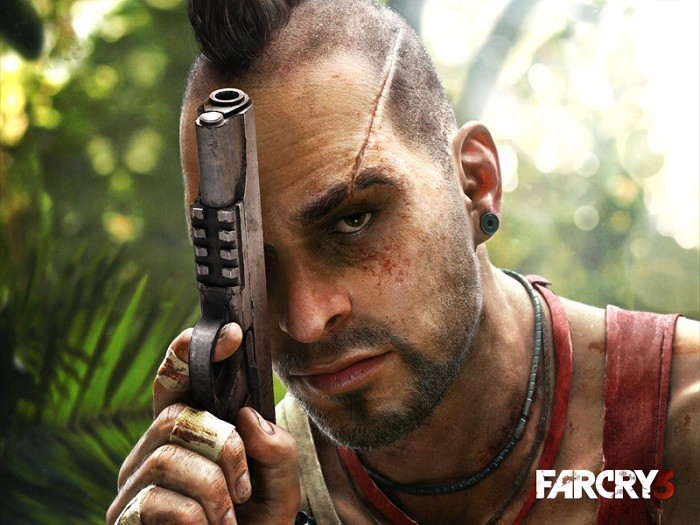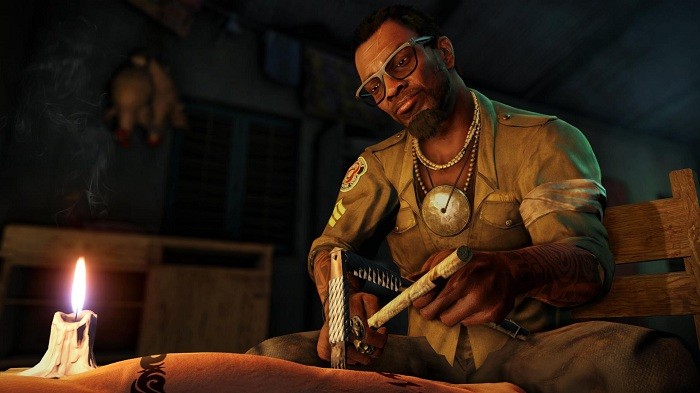Cinematics have become a very important part of video games and is probably one of my favourite things about them. Earlier this month at rAge I experienced probably the biggest highlight of my journo career so far, having the almost unreal opportunity to interview not only DICE Battlefield Community Manager, Daniel Matros but speak with Far Cry 3’s Cinematic Director, Robert Purdy.
Robert gave some incredible insight into the cinematics of the game, read the full interview below.
What set’s the cinematics of Far Cry 3 apart from other video games?
I guess really with Far Cry 3, because we were telling the story, we made the decision to tell the story in first person point of view and not use kind of traditional film editing. We had to rely really on great performances. So I think we’ve really pushed the level and the quality of performance, from not only body performance, but facial performance. I think this is kind of what makes us stand out in cinematics. Because we can’t cut away, and we’re looking at that person for a two minute scene we had to make them very interesting. So we really pushed performance capture. I would consider the standing very high for performance capture in video games.
What are the challenges of making cinematics flow seamlessly into gameplay?
Well, doing an open world is probably one of the hardest aspects to manage for story, for entering and exit. Because if you imagine, a scene takes place in this part of the world, a player who is in the open world can enter that scene from anywhere. So that’s the biggest challenge. How do you make it the least jarring going from gameplay control, to cinematic control? And in an open world that becomes so much more complex. In theatre or film you have like: enter – stage right, you know, it’s very controlled, in a game it’s not controlled at all.
What is the significance of cinematics in a game like Far Cry 3?
As I’ve mentioned the before, the performances we’ve done with out antagonist and protagonist is very strong and it’s kind of the backbone in a way. We found out once we did our “Vaas test”, the insanity monologue which was received very well. We realized that people are really engaged in this. So it became a driving force in our game. Our narrative is the thing that kind of drives our player through the world. Jason get’s there (our hero), he’s kind of a babe in the woods, he thinks he knows the world. Him and his friends are taking a gap year, but the rug is kind of pulled out from under him. Because we’re a first-person shooter, you’re going to be holding a gun a lot of the time and you’re going to be killing people in the game. We wanted to explore the idea of what would happen if you took a person who is not a killer and force them to be a killer in order to survive and save their loved ones. Because it’s our core mechanic, our story influences that as well. We kind of say: “What kind of toll does it take on a person’s mind to become that person?” So the cinematics are the backbone of the game experience.
Cinematics give characters life and personality in videogames, the importance of humanising characters not only in voice acting, but animation of body language and physical features is hugely important to the success of a game, how do you make sure that you hit that sweet spot?
It’s part instinct, it’s part experience and then it’s a lot of passion. I was trained as an animator; I was animation director on the project and then I became cinematics director. My job is to get everybody that I work with as invested in it as I am. And this starts right from the script phase. You get a script writer that’s passionate about what they want to do. As long as people are passionate about it, they’re going to give you their best work, so we kind of took that philosophy right from conception to finish, because we involved script writers quite a bit. Then when we started getting the actors, we gave the actors some creative freedom. Where Michael Mando (the actor who plays Vaas) is a great example of this. We involved Michael in the process of developing Vaas and what we hit on there, is kind of the sweet spot of what’s working about this and one of the things were letting people have creative control.
How has video game cinematics changed over time?
I think they’re a bigger part of the experience. Games started really I guess from hand-eye coordination, test of skill. But now because they’re a valid form of entertainment, people want story and I think when they first wanted to tell stories in games they just injected a cut scene to say like: “go here, do this.” But now, because people want to root for the protagonist, having an emotional connection gives you a much deeper experience. Now cinematics are a core part of the gaming experience or the entertainment experience of a game. It’s upped the level of immersion and feeling in games now.
What are the greatest challenges to creating cinematics?
For Far Cry 3, the biggest challenge was the first-person point of view and staying in it the whole game. We explored early if we wanted to tell the narrative in a more traditional cinematics style (like third person), where you can cut away, change angles, where I can do tight shots or wide shots. But because we were exploring the idea of what killing people does to somebody’s mind, it was clear hat we wanted to stay in Jason’s p.o.v and stay in his mind. But this became a very challenging story telling hurdle because a lot of the bags of tricks in visual story telling has been taken away from me and you have to stay in shot for a long period of time which sometimes can get boring, and that’s why we then had to push the character performances as far as we could.
Are there more restrictions on how creative you can be when creating cinematics for a franchise title than for an IP?
No. I would say, in Far Cry 3 there was huge room for creativity. I think it shows in the final project. The one thing I like about the Far Cry franchise is that Ubisoft has never been afraid to take a chance. The first one was set in a tropical setting, it was not really open world or what ever, then Far Cry 2 comes and they go to the Savannah completely open. Whether people liked it or not, it was a bold choice by Ubisoft, and I think that was great. And then Far Cry 3 was again another bold choice I believe, although we’ve gone back to the islands, the reason we’re going back to the islands is not because the first one was set in the islands.
How do you achieve making characters and environments believable enough, to make a connection with the audience?
I guess again, it’s a balancing act. We have the capabilities of having beautiful graphics, but with that come more hurdles. Once we get new technology to let’s say, I can do more detail on a character. More is not necessarily better. Now that we can really push facial animation and facial quality, the thing that fights that is a lot of detail. I did a bunch of reference stuff for people where I showed them an actress without make-up and then I showed them what the film version of her looks like. And I did this a bunch of times, the reason I did this was because I said film has spent a hundred years putting make-up on people to lessen the amount of visual noise on their face. And it’s not because they’re ugly or anything, it’s just because the camera does not like it.
The same happens in video games. The technology has not allowed us to do complete photo realism of characters. Even film is only scratching the surface of this. So when you have a character that has a lot of visual detail on their face they look great when they’re not moving, as soon as that moves and it may not look exactly the way you thought it would, in real life, your in the uncanny valley. They tend to look un-human. So what we to do is try measure how much detail we put it to not make it look low quality and how much is too much when we start animating a face. Again it’s a balancing act and no two characters are the same, one person might have more detail in the face and it looks great animating, some you have to remove.
What was your favourite part of creating the cinematics for Far Cry 3?
Shooting, I love shooting. The feeling of being at the mocap studio and being with the actors and the crew. Just the whole idea of running through a scene and talking with an actor and saying “action” and see them turn into the character is amazing.
The other thing is, because I’m an animator sitting down with the other animators and talking again about performance. I think I’m always geared towards performance. Probably character development is what it boils down to, I love seeing a character come to life. Reading a script, seeing the character in my head and then going into a shoot and seeing an actor perform it, it’s amazing. It’s amazing when an actor nails it or they bring something that you had no idea was there.
Far Cry 3 is an action-adventure first-person shooter game and will release on PlayStation 3, Xbox 360 and PC on November 29th in Europe and December 4th in North America.
Last Updated: October 18, 2012
























